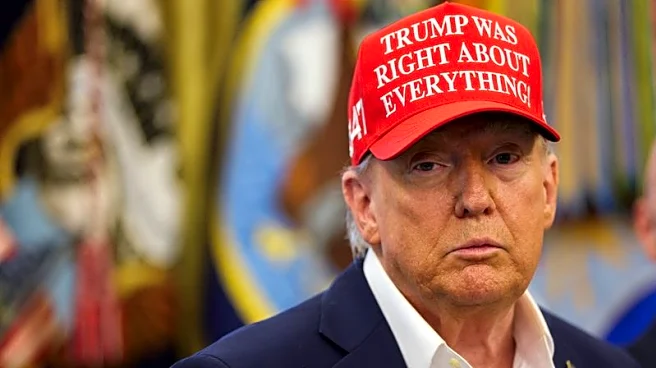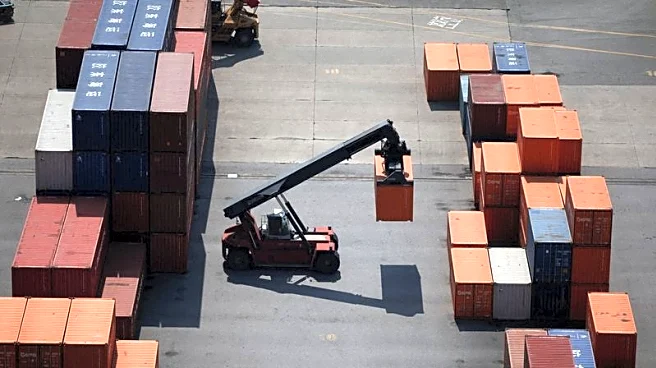What's Happening?
President Donald Trump has announced that his administration will investigate imports of furniture into the United States, which is expected to result in higher tariffs within the next 50 days. This move is part of a broader strategy to increase tariffs on imported goods, including copper, semiconductors, and pharmaceuticals. The investigation aims to boost domestic furniture production, particularly in states like North Carolina, South Carolina, and Michigan. The announcement comes amid rising furniture prices, which have been increasing due to previous tariff hikes on imports from countries like China and Vietnam. These two countries were the top sources of imported furniture last year, contributing $12 billion worth of goods. The Consumer Price Index has recorded a rise in furniture and bedding prices, with significant increases in categories such as office, recreation, and patio furniture.
Why It's Important?
The potential increase in tariffs on imported furniture could have significant implications for both the U.S. economy and international trade relations. Domestically, higher tariffs may encourage the growth of the U.S. furniture manufacturing industry, potentially creating jobs and boosting local economies in states with strong furniture production sectors. However, consumers may face higher prices for furniture, which could impact spending habits and overall consumer confidence. Internationally, the move could strain trade relations with major furniture-exporting countries like China and Vietnam, potentially leading to retaliatory measures. The decision also reflects the ongoing trade policy approach of the Trump administration, which has focused on reducing trade deficits and promoting domestic manufacturing.
What's Next?
As the investigation progresses, stakeholders in the furniture industry, including manufacturers, retailers, and consumers, will be closely monitoring the situation. The outcome of the investigation and the subsequent tariff rates will likely influence business strategies and pricing models. Political leaders and trade partners may also respond to the announcement, potentially leading to negotiations or adjustments in trade agreements. The broader economic impact will depend on the final tariff rates and the ability of domestic manufacturers to meet consumer demand.













